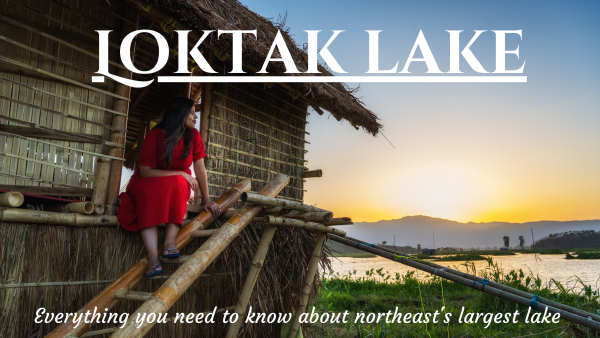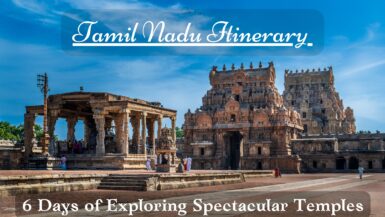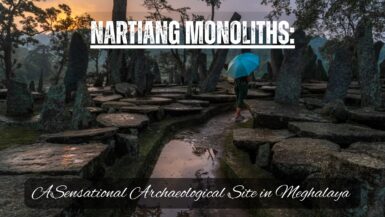The north-eastern part of India is a treasure trove of wonderful places, and one such astounding phenomenon is Loktak Lake of Manipur. Manipur is the “Jewel of India.” And Loktak and its floating islands called “phumdis” are the jewels of Manipur. So, in this blog, we have tried to cover everything you need to know about Loktak Lake before planning a trip there.
Also, to know about Imphal, check our other blog post here.
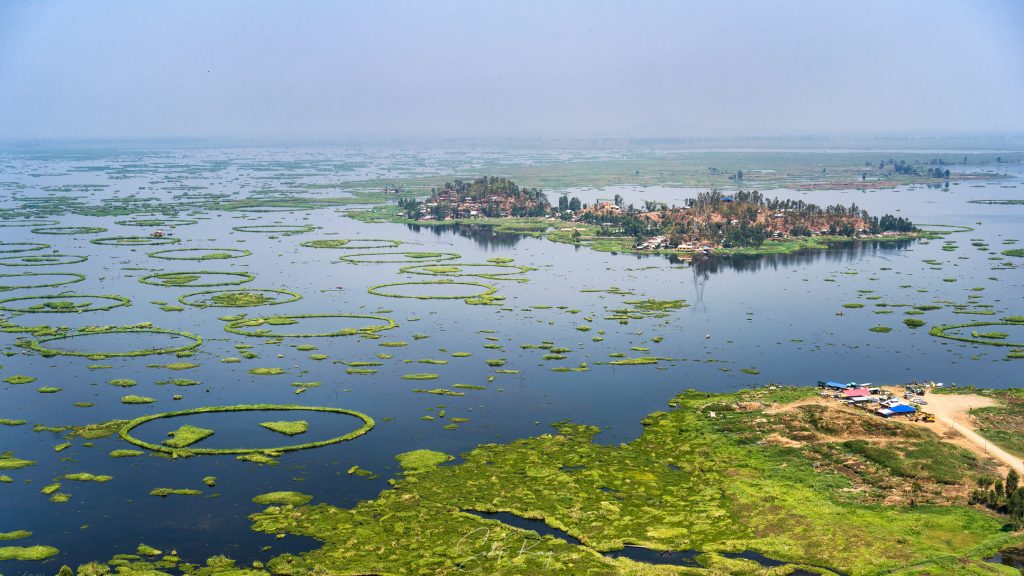
Table of Contents
About Loktak Lake:
Loktak Lake is the largest freshwater lake in north-eastern India. The word “Loktak” is derived from two words – ‘Lok’ meaning stream and ‘Tak’ meaning the end. It covers an area of 287 sq. km. The lake is revered by the local people as Loktak Lairembi or Goddess Loktak. According to Meitei legend, the mythical creature, Poubi Lai, resides inside this lake. It is also believed that the legendary romance of Meitei princess Thoibi and Khuman prince Khamba had blossomed on the banks of Loktak.
Location of Loktak Lake:
This iconic lake of Manipur is situated in the Bishnupur district, near the town of Moirang. From Imphal, the lake is about 52 km away.
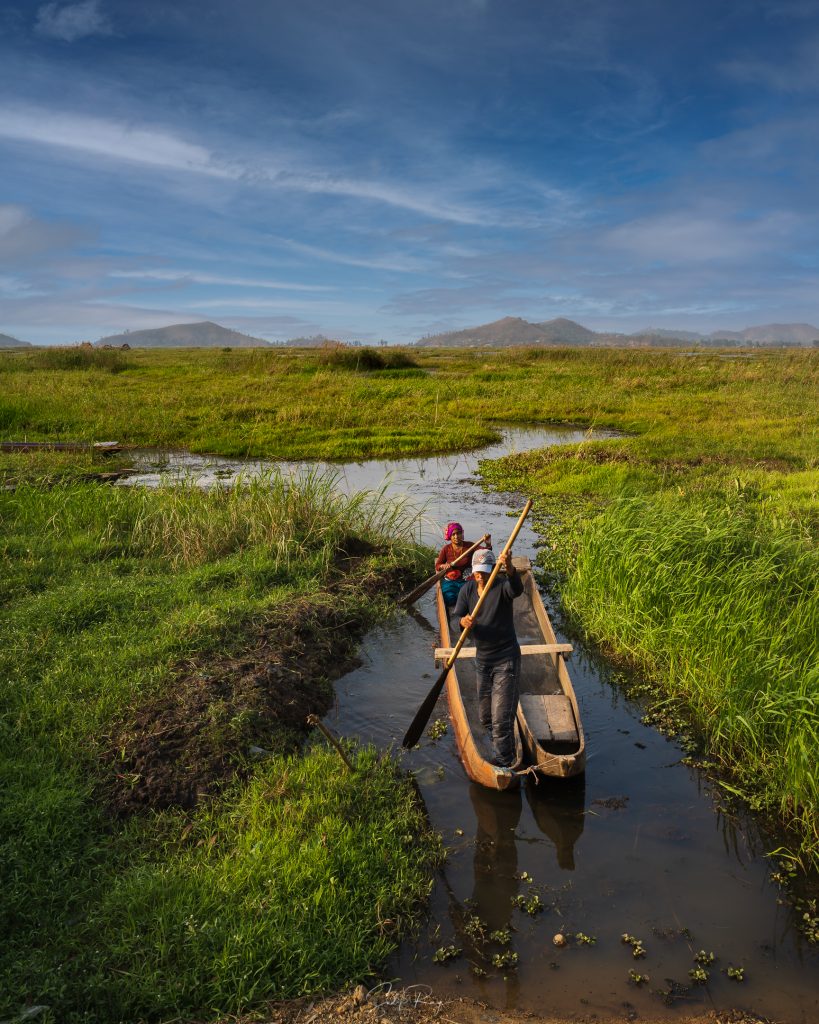
How to reach Loktak Lake:
- By air: The nearest airport is Bir Tikendrajit International Airport of Imphal.
- By train: There is no train connectivity in Manipur. The nearest railway station is Dimapur in Nagaland.
- By road: Moirang can be reached from Imphal by private buses or hired cabs. From Moirang, tuk-tuks can be opted to reach Loktak Lake.
Best time to visit the lake:
Best time to visit Loktak Lake is between the months of October and March.
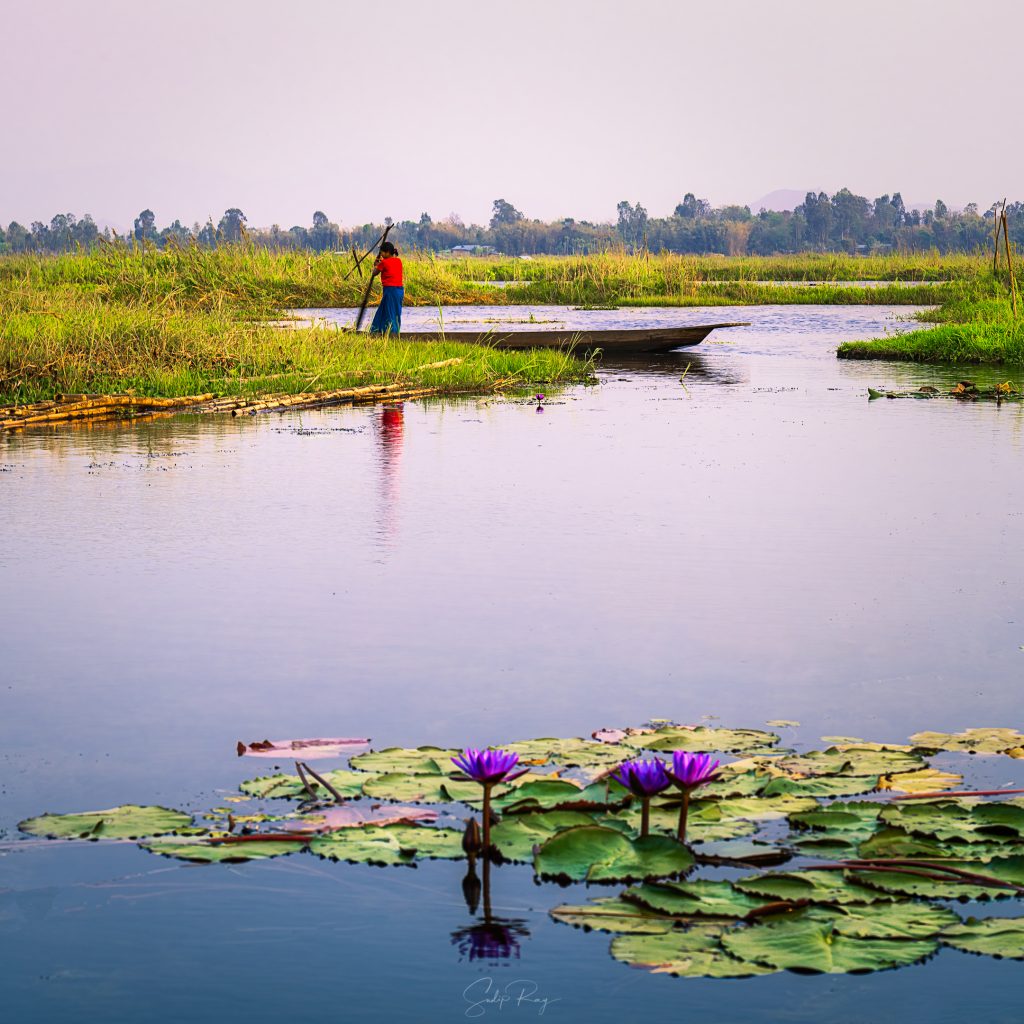
Where to stay in Loktak:
There are three main options of accommodation available in Loktak Lake:
Loktak Aquamarine Floating Homestay: Owing to its location right on a phumdi, this homestay is perhaps the best option to experience Loktak Lake. It is a sustainable and ecotourism venture. Its primary goal is to promote tourism in Loktak without destroying the ecology and environment of the lake. Run by locals, it also aims to showcase local culture to travelers. Environment friendly materials such as bamboo and reed are used to build the cottages. Plus points also for the delicious local cuisine served here. The homestay charges INR 1,200 per person per day. It includes breakfast, dinner, accommodation and boating.
Maipakchao Family Homestay: It is located in Thanga. It began its journey in 2013. The homestay offers simple rooms, private toilets and yummy local foods. It charges INR 1,200 per person per night and includes accommodation and all meals.
Sendra Park and Resort: It is a part of a well-known resort chain of Manipur. The resort is located on a hill top and provides gorgeous views of the lake. There are 10 rooms available here and provided with all amenities. Room rents vary between INR 4,000 – 5,000.
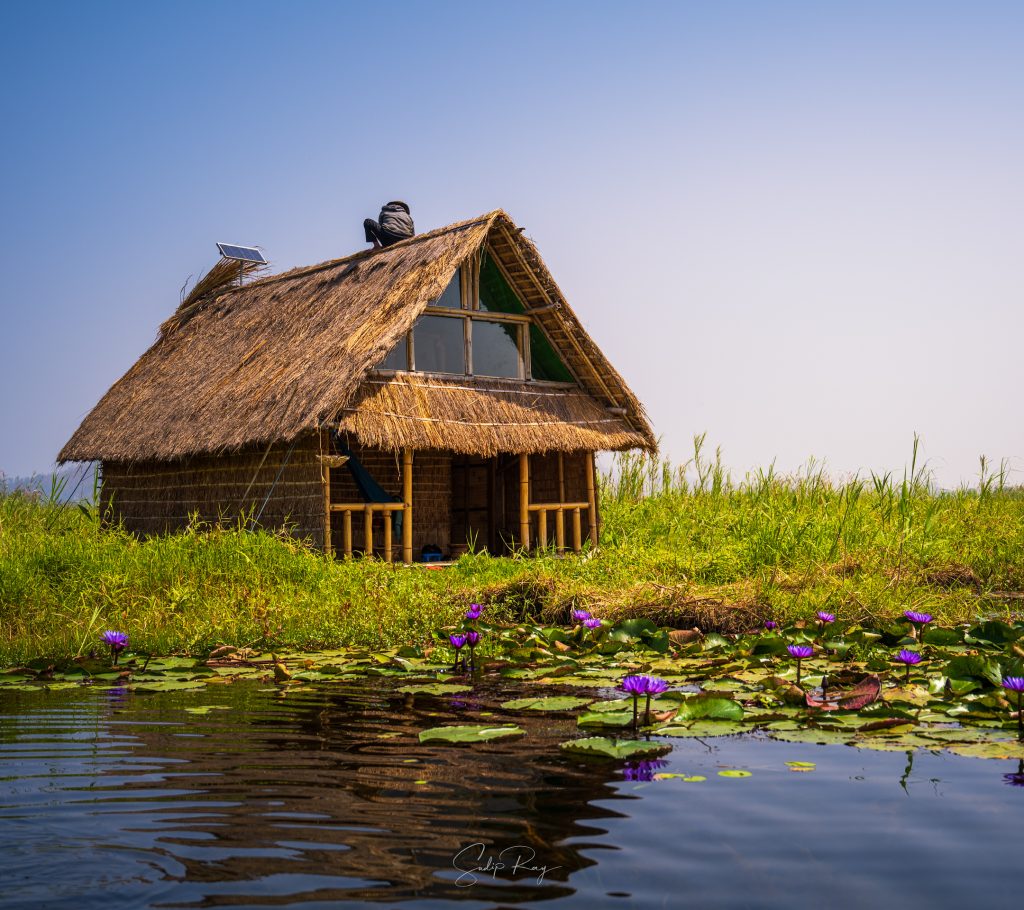
What makes Loktak Lake famous: Phumdi, Keibul Lamjao & Sangai
Loktak Lake is famous for the following three main reasons:
1. Phumdis: Loktak’s fame primarily rests on its “phumdi” or floating islands. Phumdis are basically floating mass of vegetation. The gradual accumulation of organic garbage, decomposed plant materials and soil particles has led to the growth of phumdis. The surface of the phumdis is spongy, much like a trampoline. Interestingly, most of the mass of the phumdis lies below the water surface. The phumdis are quite strong and sturdy, so much so that houses and even roads have been built on them. Most of the phumdis have been arranged into circles by the local people, mainly for fishing. The phumdis play an important role in the livelihood of local people.
2. Keibul Lamjao National Park: World’s only floating national park, Keibul Lamjao, is located on the south-eastern part of Loktak. The national park is a marshy wetland, barely covering an area of 40 sq. km. It plays a vital role in preserving the unique ecology of the lake.
3. Sangai Deer: The gravely endangered Sangai deer are found only in Loktak Lake. The Keibul Lamjao National Park is the only home of this species. Sangai, also known as Brow-antlered Deer or Eld’s Deer, is the state animal of Manipur. Also known as Dancing Deer, the Sangai’s walk on the floating phumdis resemble that of dance. The number of Sangai has dwindled to 215, making them even more endangered than the tigers.
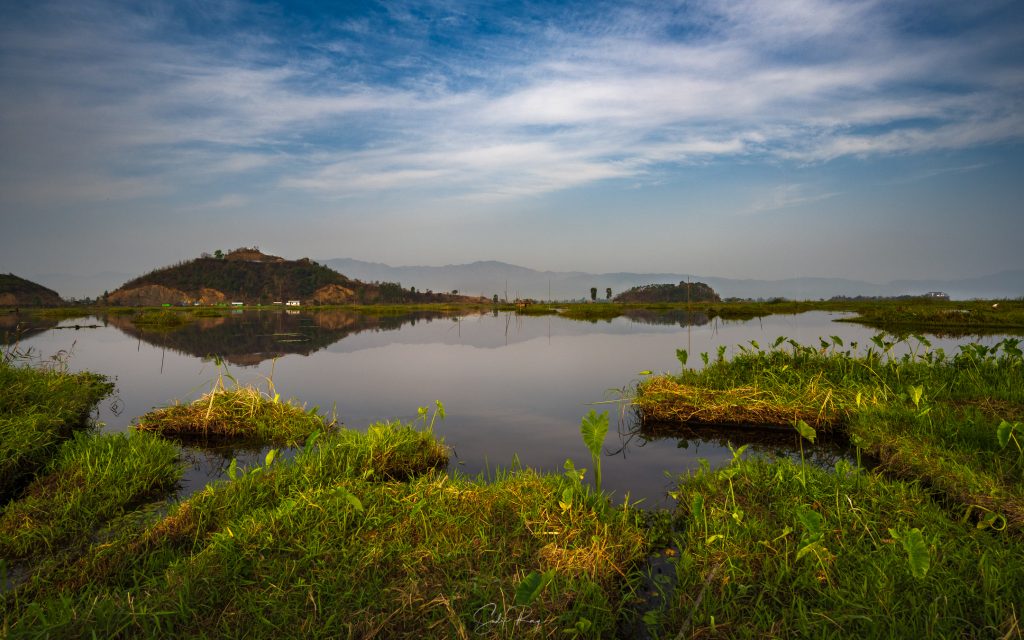
Flora and fauna of Loktak:
The Loktak lake has a rich biodiversity. It is estimated that in Loktak, there are 233 species of aquatic plants, 425 species of animals, and over 100 species of birds are found. The Keibul Lamjao National Park is the home of most of these species.
The vegetation found here is semi-aquatic in nature. Plants predominantly found here are Elephant grass, Munja grass, Bermuda grass, Reed grass, Greater Galangal, common water hyacinth, Indian lotus, and wild rice.
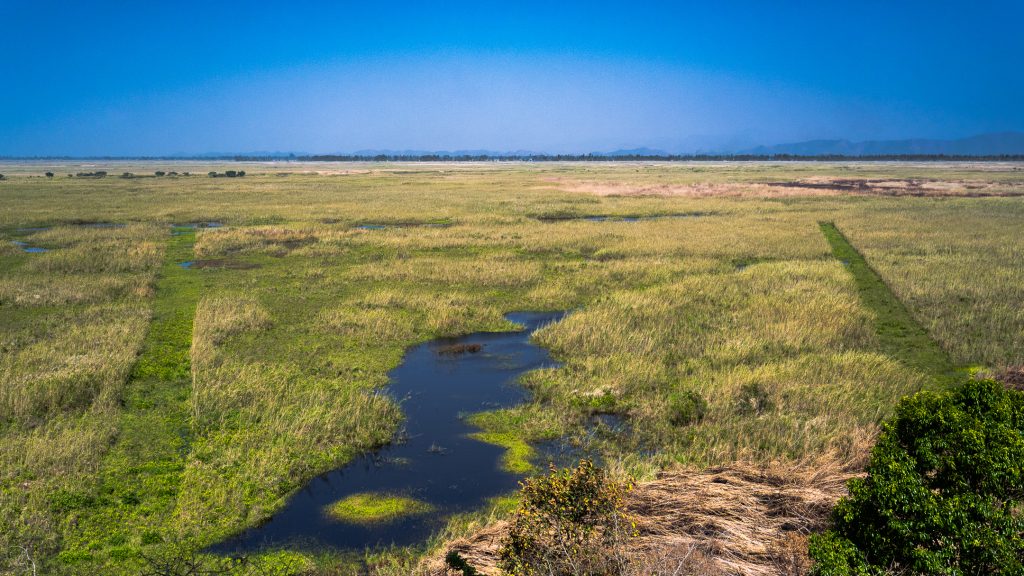
Apart from Sangai, Loktak is home to Hog deer, Barking deer, Sambar, Flying Fox, Hoolock Gibbon, Indian Civet, Otter, etc. Further, the lake provides habitation to various snakes such as Russel’s Viper, Banded Krait, Cobra, Indian Python, etc.
Loktak is a haven for birdwatchers. East Himalayan pied kingfisher, blue-winged teal, Burmese pied mynah, Indian white-breasted water-hen, ruddy shell duck, black kite, yellow-headed wagtail and sarus crane are few of the noted birds.
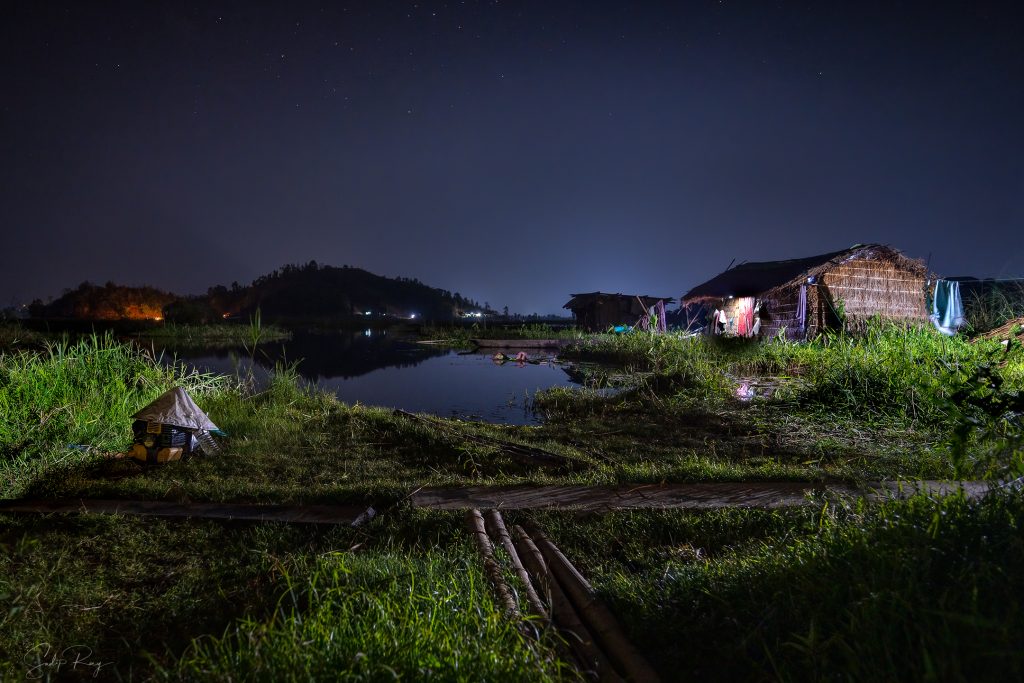
Things to do in Loktak Lake:
1. Early morning boat ride on the lake:
A boat ride in the first light is a splendid chance to enjoy the serenity of Loktak. The fishermen busy with their nets and traps while nabbing the catch of the day, men collecting edible weeds, some women plucking throngs of lotus – morning is also the perfect time to watch the daily lives of the locals.
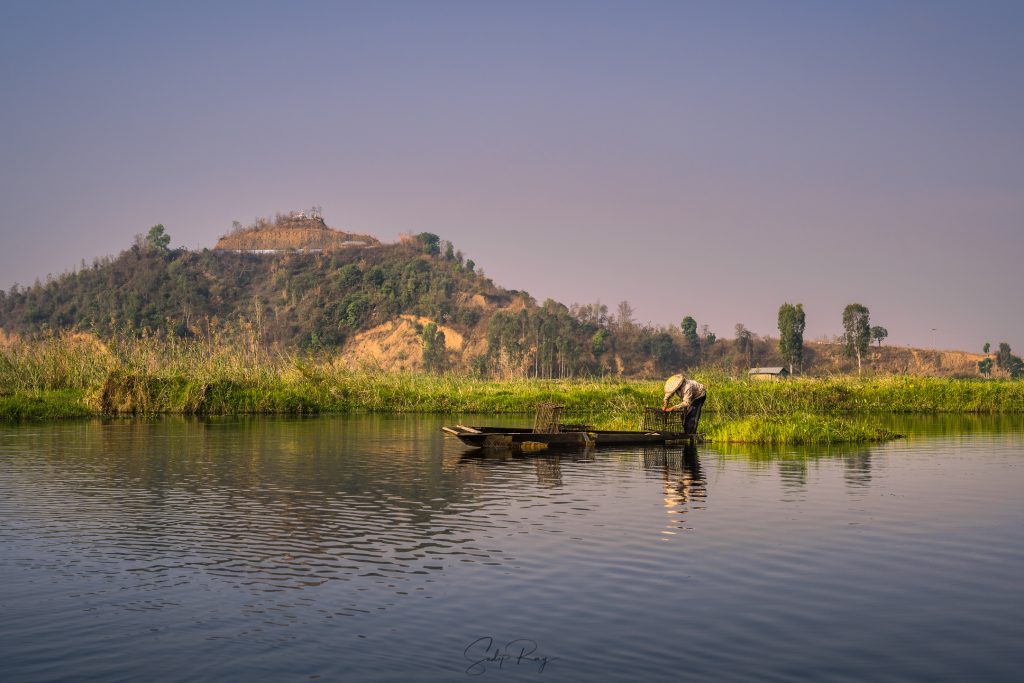
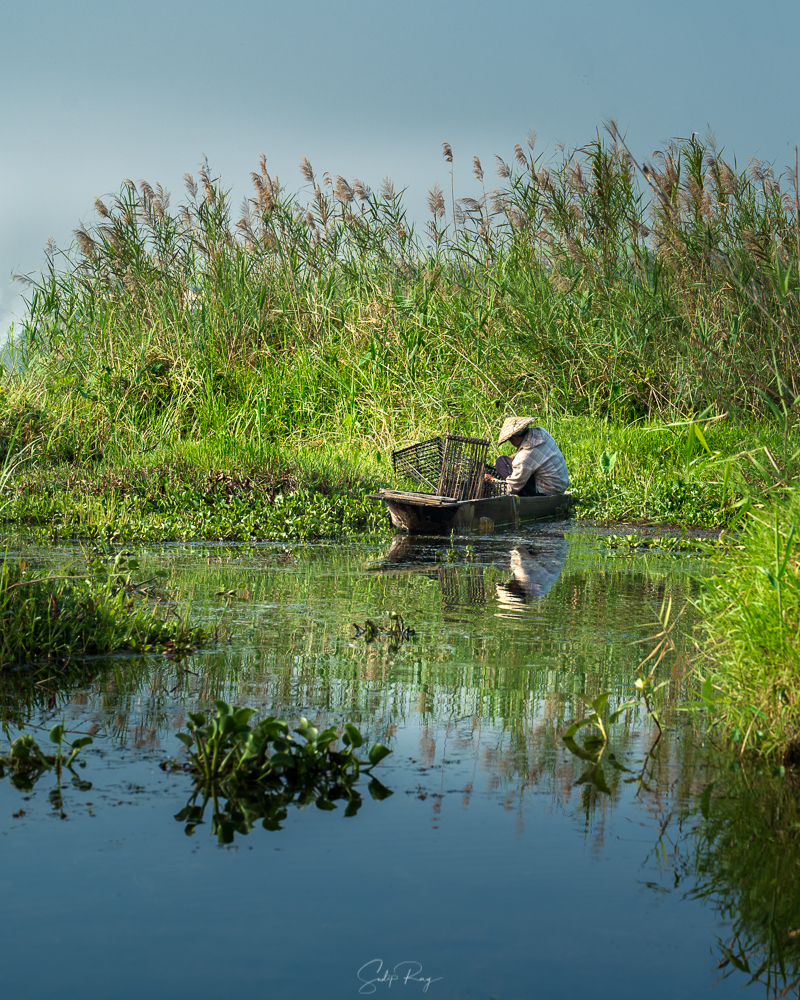
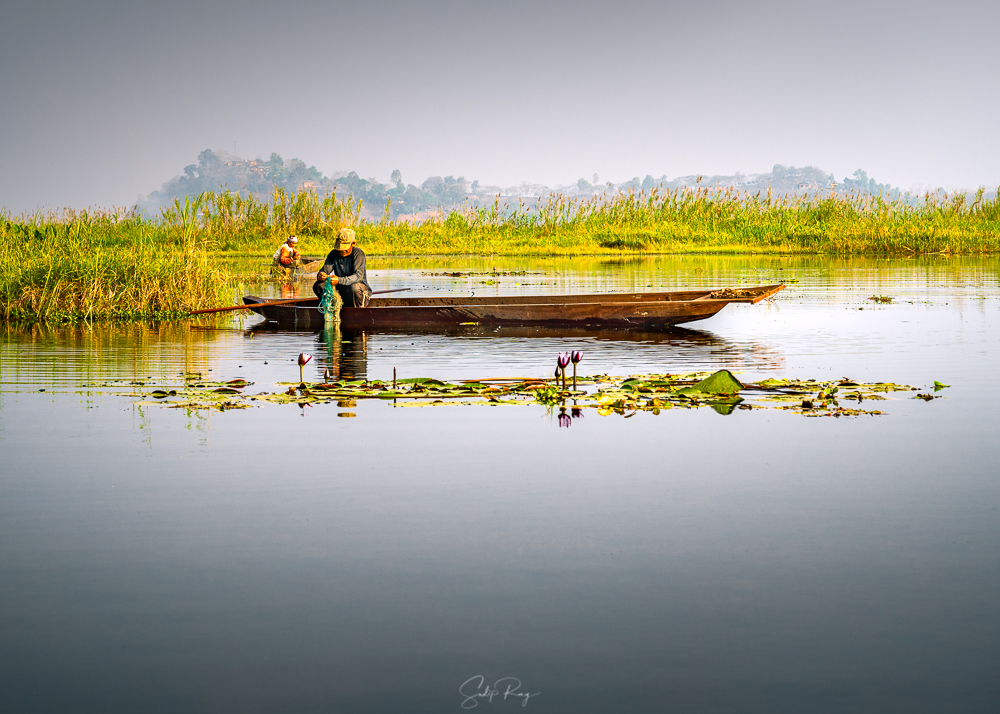
2. Boating at day’s end:
Catching the sunset while rowing on Loktak Lake is another memorable experience.
3. Visiting Keibul Lamjao National Park:
A trip to Loktak Lake remains incomplete without visiting the world’s only floating national park. The dance of the Sangai deer is a treat to the eyes.
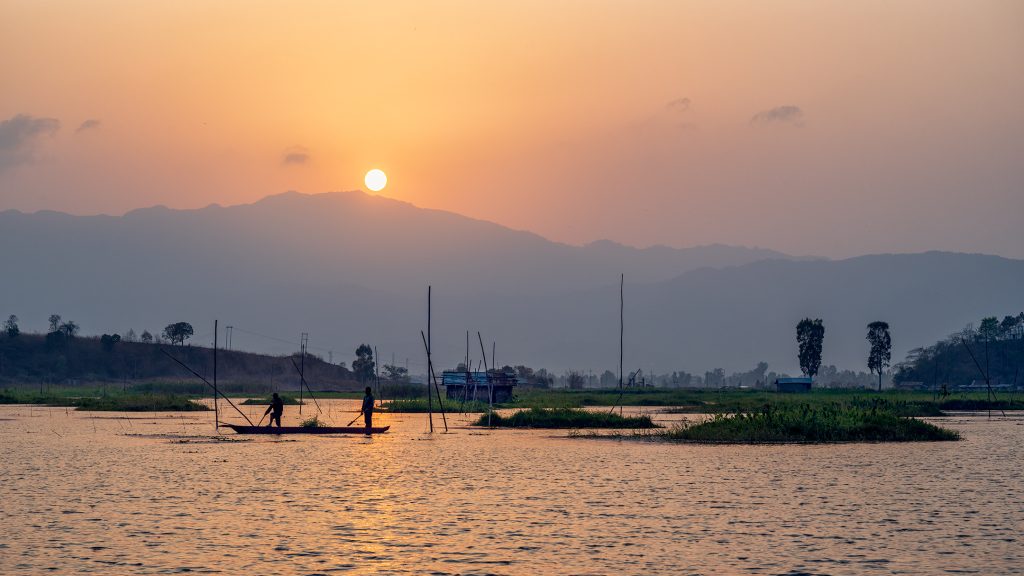
4. Sendra viewpoint:
It provides a gorgeous view of Loktak Lake.
5. Chauba Ching viewpoint:
This place was once a camp of the Assam Rifles. The watchtower here gives a seamless view of the Lake and its phumdis.
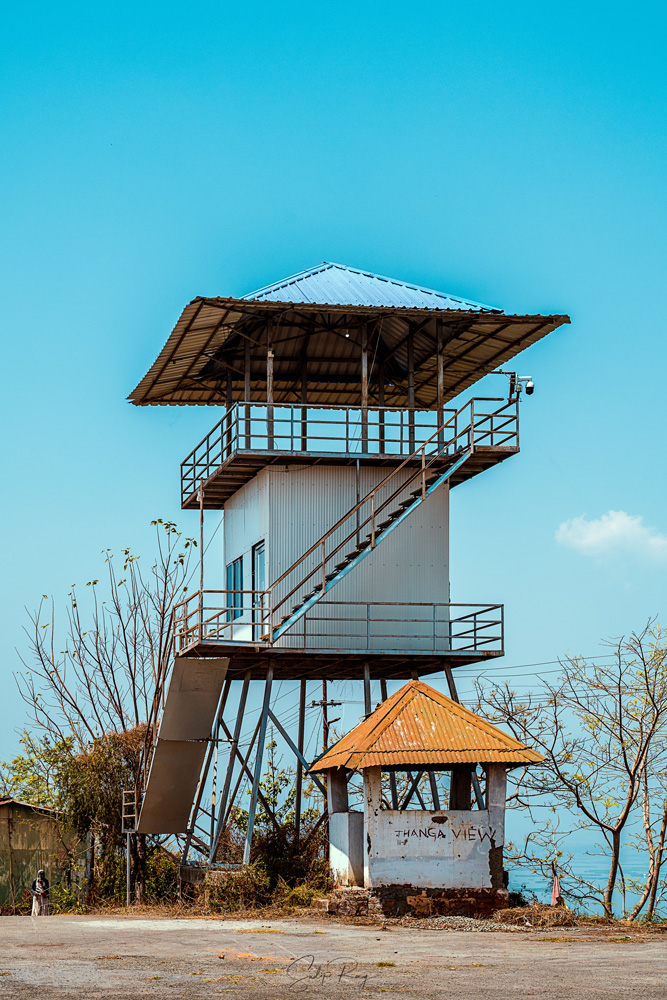
6. INA Museum: Located in Moirang, it was the erstwhile headquarter of the Indian National Army. It has now been converted into a museum. It houses priceless photographs, documents, letters, etc. of Netaji Subhas Chandra Bose. The museum also documents the glorious history of INA.
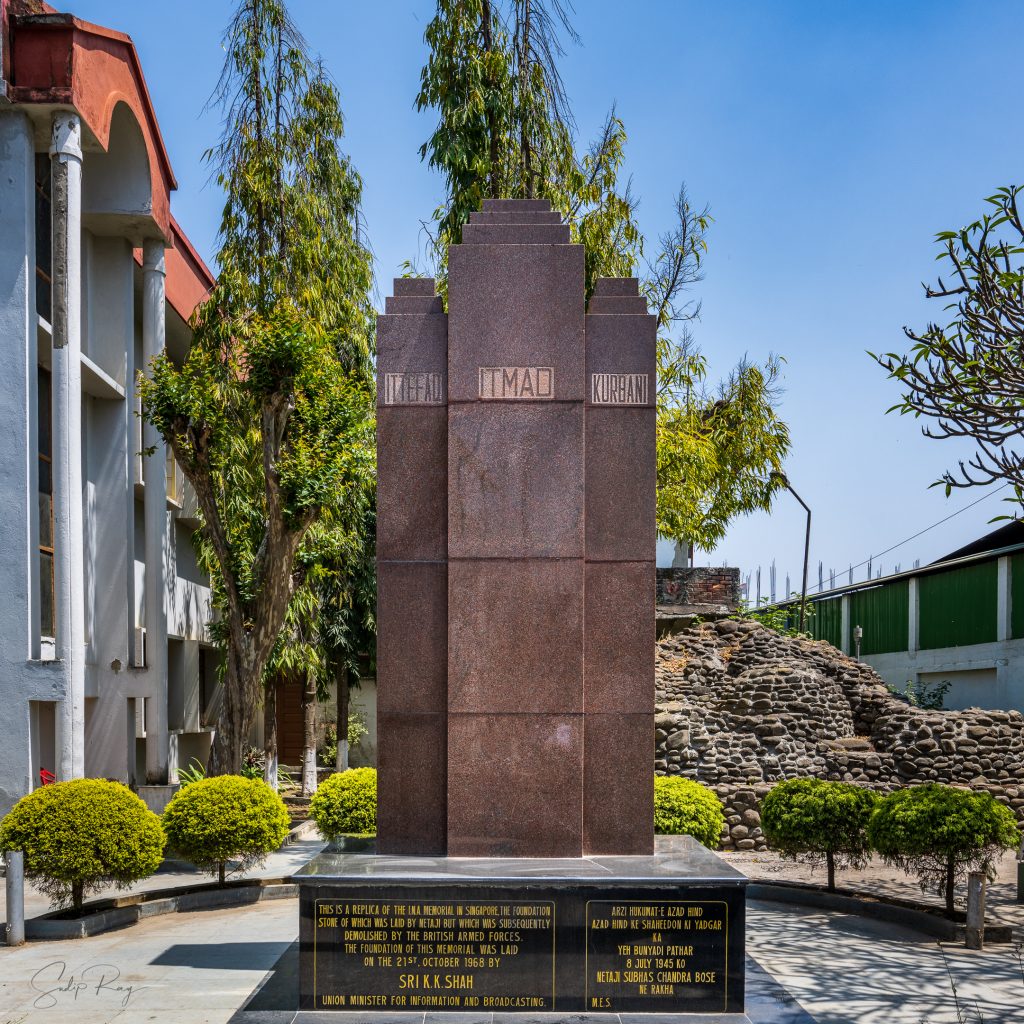
7. Ibodhou Thanjing Temple: It is one of the main places of interest in Moirang. Thanjing is one of the primary deities of the Meitei people. Khamba and Thoibi of Meitei epic had danced in this temple. Their dance led to the birth of “Khamba – Thoibi” dance form of Manipur. This dance is the main attraction of “Lai Haraoba” festival.
8. Ima Keithel, Moirang: Moirang has a bustling Ima Keithel or women’s market. It is smaller than the one found in Imphal, but the spirit is the same nonetheless. The Ima market sells everything – fruits and vegetables, dried fish, clothes and shoes, handicraft products, and so on.
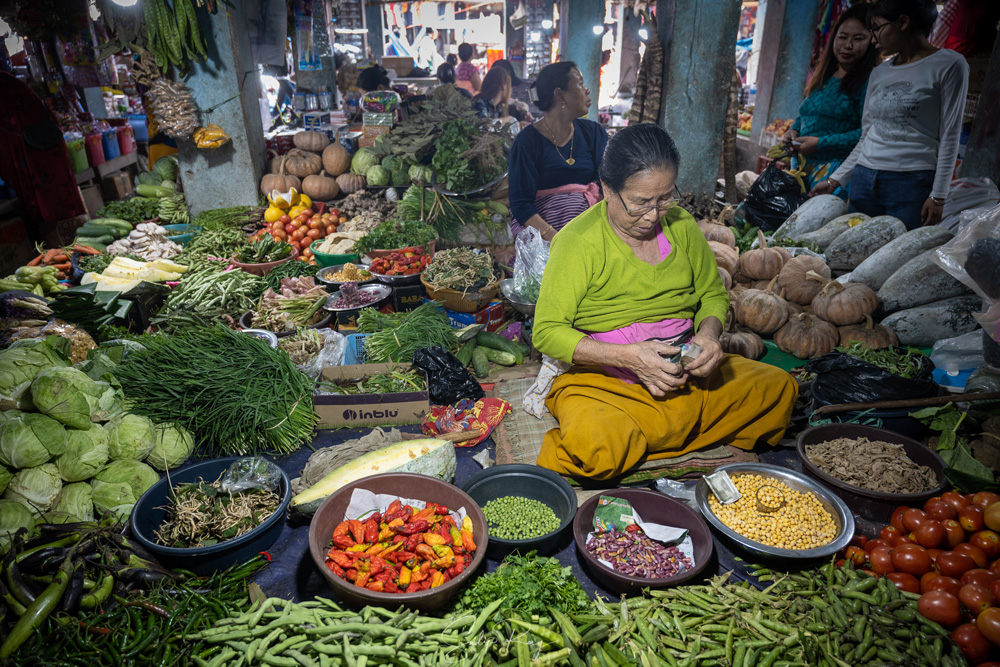
Things to remember:
- There are no prescribed timings for visiting the Loktak lake.
- Also, there are no entrance fees for Loktak Lake.
- The ecology of Loktak Lake is gradually crumbling owing to human interference. Hence, it’s necessary to travel responsibly and carefully while visiting Loktak. A few small steps can be quite helpful such as
- staying at homestays instead of resort like chain accommodation,
- opting for wooden boats instead of the tourist motorboats,
- refrain from littering plastic in the lake,
- avoid disposal of personal trash in and around the lake,
- using environment friendly soaps and shampoos while staying inside or beside the lake as they will end up in the lake eventually.
- Like other northeastern states of India, Inner Line Permit (ILP) is necessary to visit Manipur. Click here to get all information on ILP.
